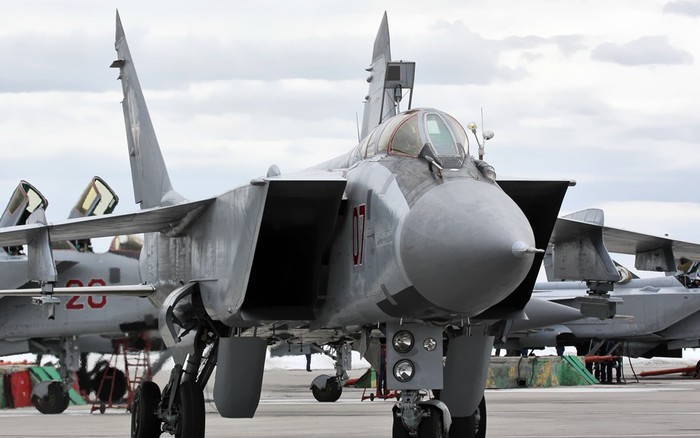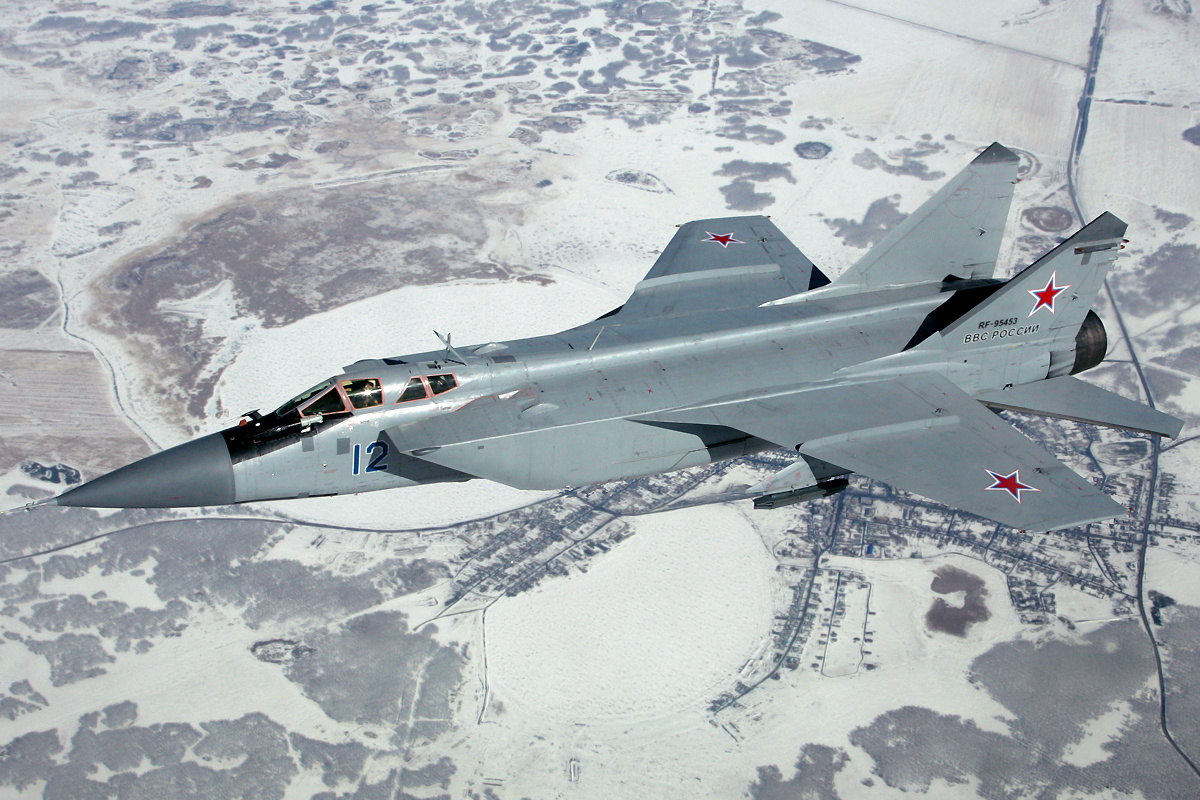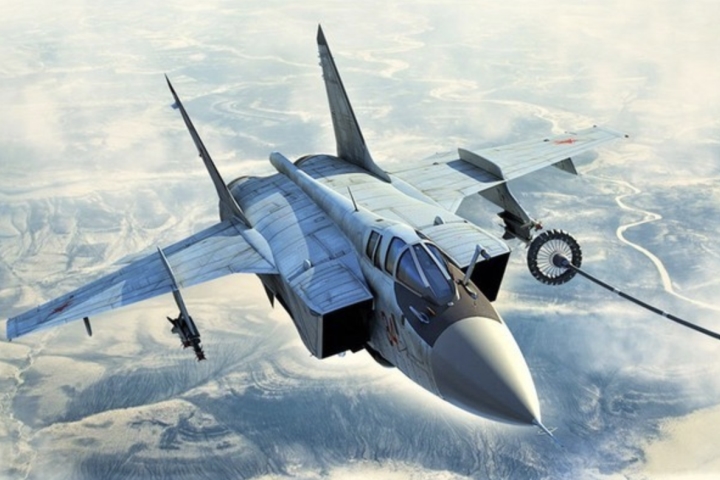The Mikoyan MiG-31, also known as the “Foxhound,” is a supersonic interceptor that has long been a pillar of Russian air defense, boasting unparalleled speed, power, and versatility. Designed during the Cold War to intercept high-speed targets, this formidable aircraft remains one of the fastest and most fearsome fighter jets in the world.

A Beast Born for Speed
The MiG-31, first introduced in the early 1980s, was developed to replace the aging MiG-25, with one mission: to catch and destroy any target, no matter how fast or elusive. Capable of reaching speeds over Mach 2.8 (about 3,000 km/h), the MiG-31 is one of the fastest jets in the sky, outpacing even many modern fighters. Its dual afterburning engines, combined with its impressive aerodynamics, allow the MiG-31 to chase down cruise missiles, bombers, and even low-orbit satellites, making it an unrivaled interceptor.
High-Altitude Domination
The MiG-31 isn’t just fast—it operates at extreme altitudes. With the ability to fly at over 20 kilometers (65,000 feet), this jet takes advantage of the thin air to maintain its supersonic speeds. At these heights, it has a greater vantage point to detect and engage threats long before they come into range of other aircraft or ground defenses. This high-altitude capability allows the MiG-31 to create a near-impenetrable aerial shield, covering vast areas of airspace with ease.

Radar and Armament: A Deadly Combination
Equipped with one of the most powerful radar systems in the world, the MiG-31 can track multiple targets at once, even those flying at low altitudes. Its phased-array radar, the Zaslon-M, can detect enemy aircraft from up to 200 kilometers away, giving the Foxhound ample time to plan and execute intercept missions. Additionally, its advanced infrared sensors allow it to lock onto stealthy targets that might otherwise evade detection.
Armed with an array of powerful missiles, the MiG-31 is not to be trifled with. The aircraft carries long-range R-33 and R-37 missiles, capable of engaging targets beyond visual range, as well as short-range missiles for dogfights. With such an impressive arsenal, the MiG-31 can take down anything from high-speed bombers to hypersonic missiles.

A Stalwart Defender
The MiG-31 has proven to be a critical asset in Russia’s air defense network. It is often deployed in Arctic regions to patrol vast, isolated areas, where it acts as a first line of defense against potential intrusions. Its ability to cover large distances quickly and intercept threats far beyond Russian borders makes it an essential part of the country’s strategic defense.
With regular upgrades over the years, including enhanced avionics, improved engines, and updated missile systems, the MiG-31 has remained relevant in modern warfare. The latest variant, the MiG-31BM, features improved radar capabilities and upgraded targeting systems, ensuring the Foxhound can continue to counter new and emerging threats.
Beyond Interception: Anti-Satellite and Hypersonic Potential
In recent years, the MiG-31 has gained attention for its rumored anti-satellite (ASAT) capabilities. Some reports suggest that Russia has tested a modified version of the MiG-31, designed to carry ASAT missiles capable of striking satellites in low-Earth orbit. This potential would give Russia a new layer of strategic advantage in space warfare, allowing the MiG-31 to disrupt communications or spy satellites in the event of a conflict.
Furthermore, the MiG-31 has been adapted to carry the Kinzhal hypersonic missile, one of Russia’s most advanced weapons. The Kinzhal, capable of speeds up to Mach 10, can strike both land and sea targets with pinpoint precision, giving the MiG-31 a cutting-edge strike capability. This development has solidified the MiG-31’s role not just as an interceptor but as a versatile, multi-role platform in modern warfare.
Legacy of the Foxhound
More than 40 years after its first flight, the MiG-31 remains a symbol of Russian air power and engineering excellence. Its combination of speed, altitude, and firepower has ensured its place as one of the most feared interceptors in the world. Whether patrolling the frozen Arctic skies or potentially serving as a platform for futuristic weapons, the MiG-31 continues to dominate the airspace, proving that it’s a fighter jet for the ages.
The legacy of the MiG-31 Foxhound endures, showcasing that in the ever-evolving landscape of aerial combat, speed, precision, and firepower still reign supreme.





